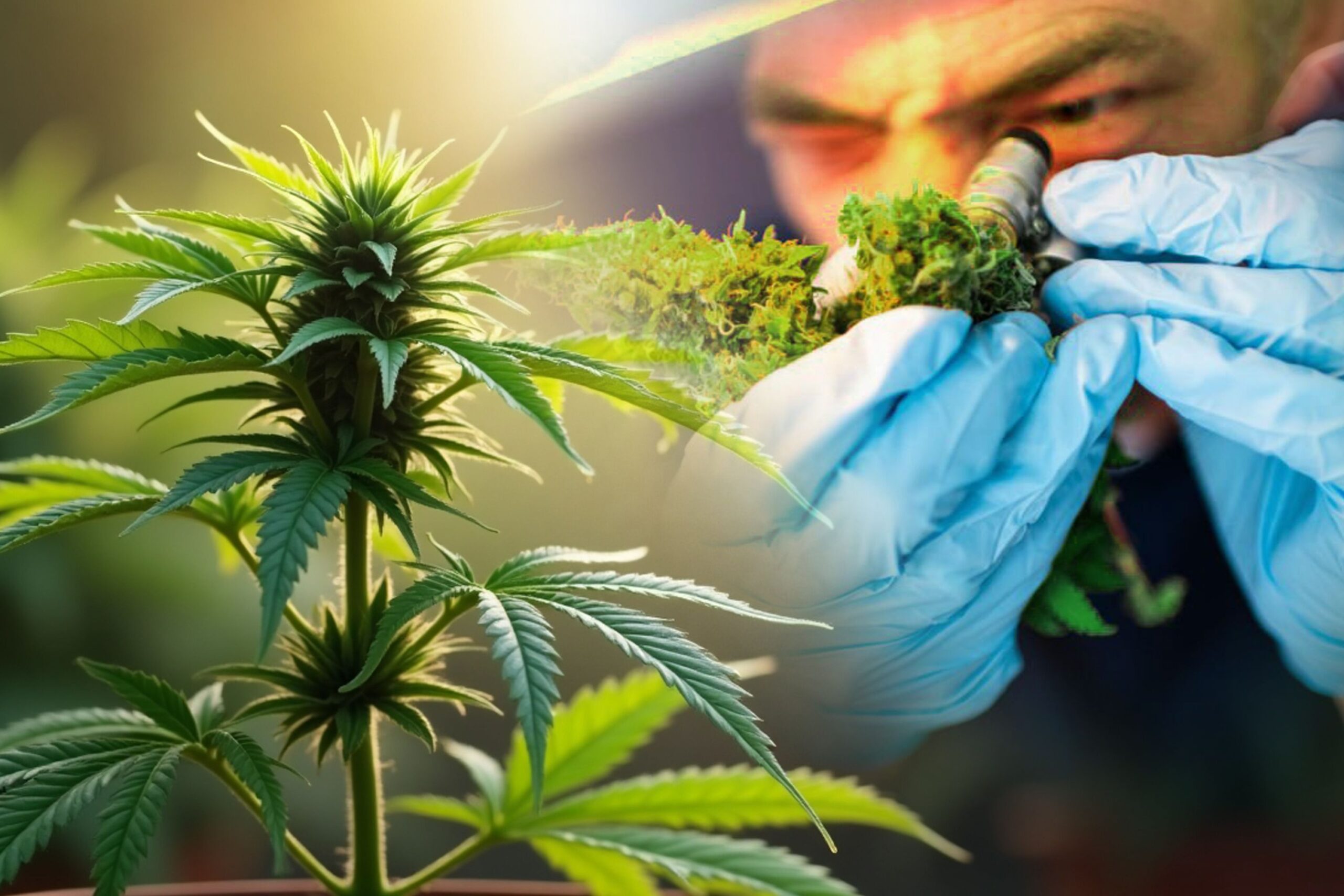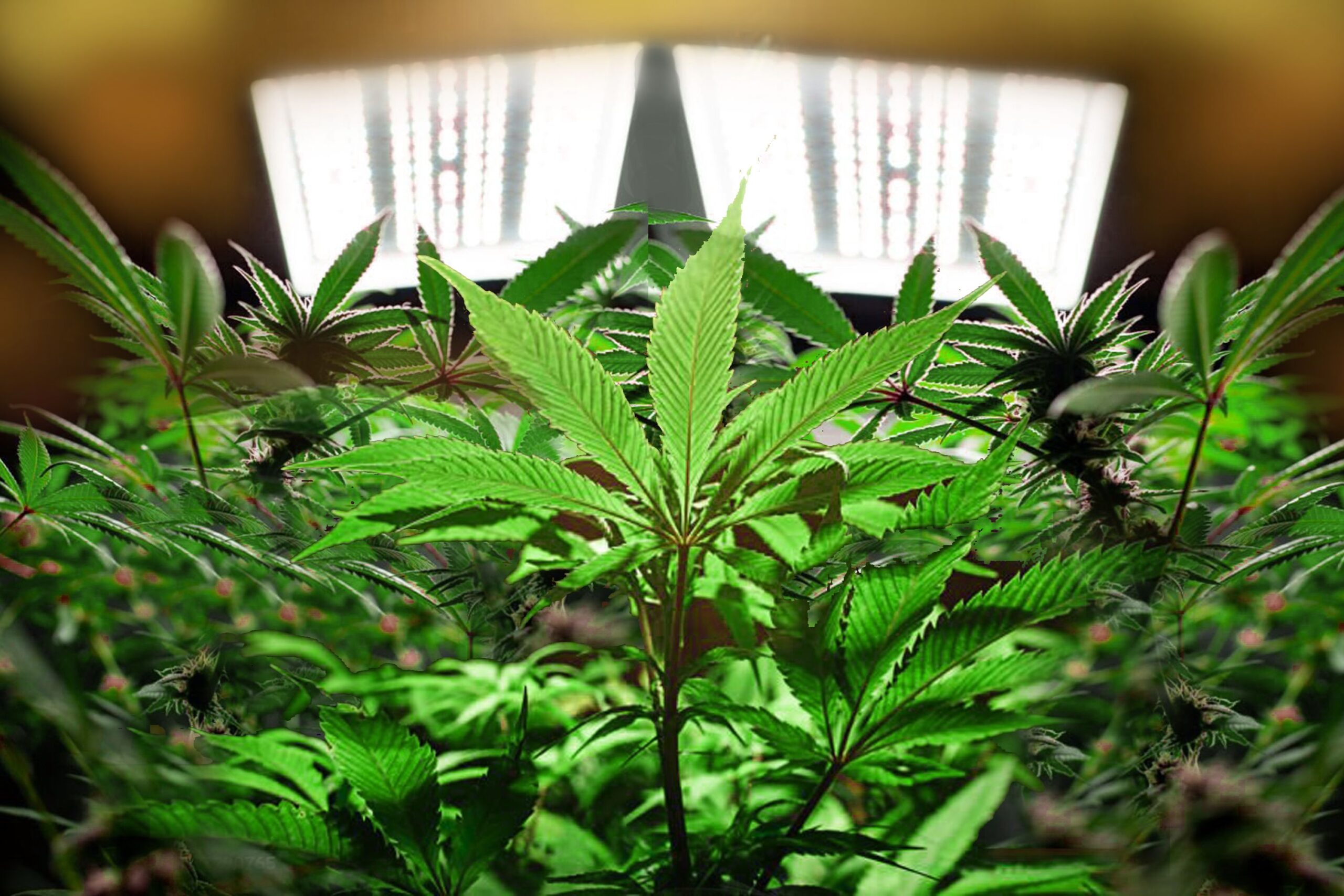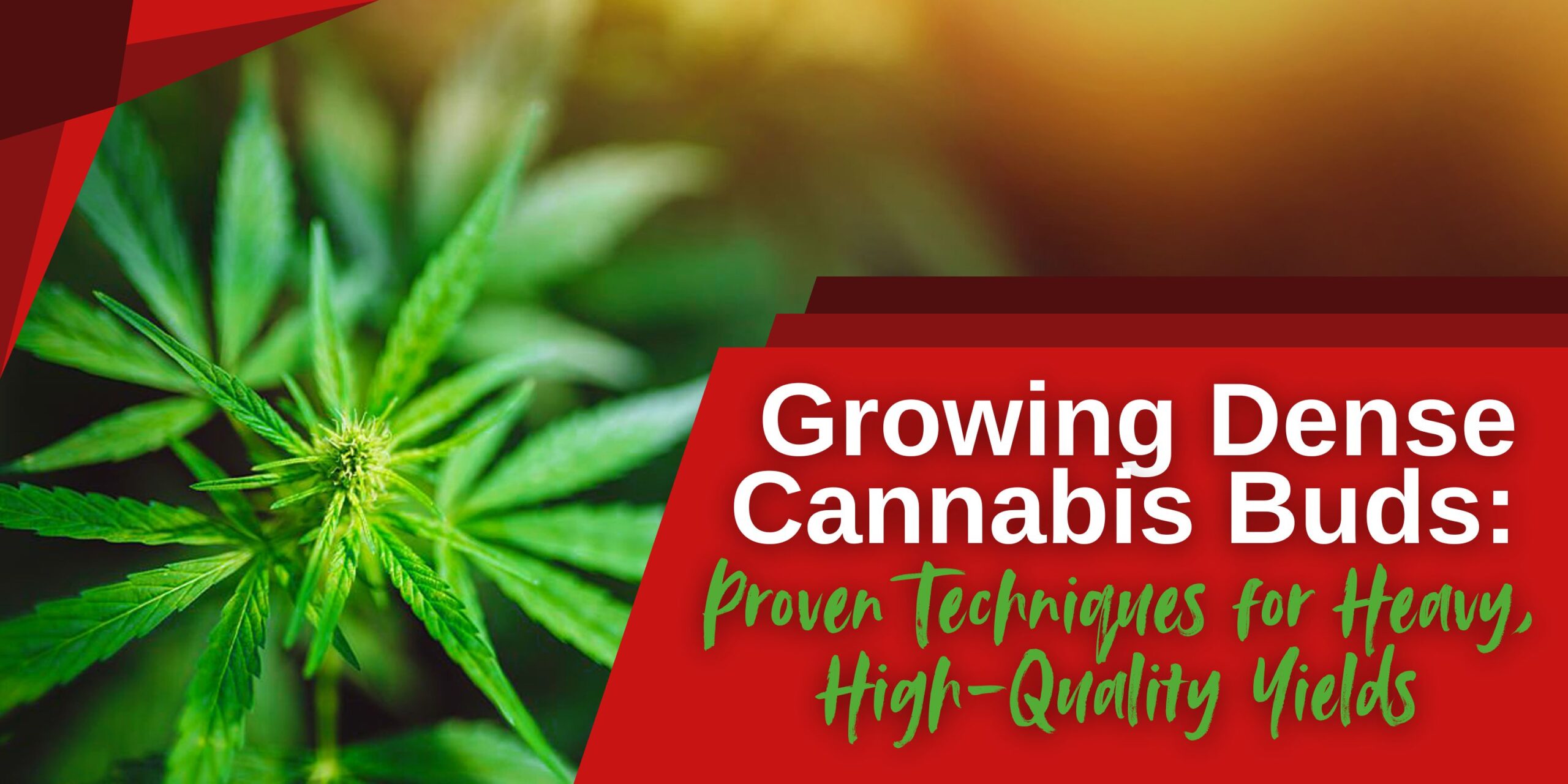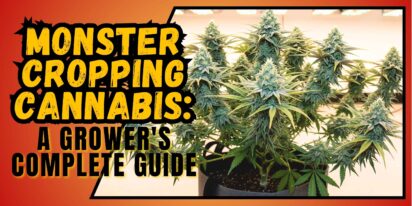Growing thick cannabis buds is crucial for gardeners seeking maximum potency, output, and bag appeal. Avoidable environmental or cultivation mistakes can lead to fluffy or airy flowers. This all-encompassing book investigates scientifically based strategies and insider grower knowledge to thoroughly uncover the best ways to cultivate super dense weed—indoor or outdoor.
Select Cannabis Genetics Appropriate for Density

Not all cannabis plants are made equal. The genetics of a cultivar mostly define the shape of the buds, density, and growth patterns. One of the most vital steps in getting thick buds is genetic selection.
Choose Hybrid Plants and Indica-Dominant
Compared to most sativa kinds, which generate longer, looser colas, indica-dominant varieties will generate shorter internodal spacing and fuller, denser blooms. Indicas not only generate greater quality but also more resin than other strains to pack out and fill the bud structure. Hybrid strains bred specifically for indoor culture will generate thick buds as well as vigorous development. Choose varieties known for close nug structure, such as Wedding Cake, GMO, or Ice Cream Cake. Growers like these strains because of their high resin content and strong flower output, both of which help to create dense buds.
Quality Breeder Source Seeds
Choosing good genetics starts with getting good seeds. Seeds from reputable breeders who breed for high quantities of cannabinoids and structural integrity help to lower the likelihood of density instability. Genetic instability can produce weak plants that do not grow compact, thick buds. Feminized and F1 hybrid seeds provide more consistent growth, suggesting that every one of your plants is more likely to grow alike and produce quite dense flowers. Top breeders would, of course, use strict quality control measures to guarantee the immunity of the plants against prevalent cannabis pests and illnesses, hence promoting the robust development of large buds.
Consistent Clones
For someone looking for consistency and a strong past of density, cloning is usually a choice. Clones from a mother plant in good health and high output provide consistent bud growth and density. Growers can reproduce the success of a successful high performer across several cycles by cloning from it, so avoiding concern about genetic variation. Although cloning removes the genetic uncertainty natural in seeds, caution should be exercised to guarantee the mother plant has been cultivated under optimal conditions, as any deficiencies can be transferred to the clones.
Optimization for Dense Buds Light Intensity and Spectrum

Especially for indoor producers, bud density is greatly influenced by light. Sufficient light intensity and spectrum cause strong bud development and tight internodal spacing.
Employ High-Intensity Lighting
Heavy buds need high photosynthesis. For years, the industry standard for blooming has been high-pressure sodium (HPS) lamps, which generate intense red-spectrum light to promote bud density and flowering. Modern full-spectrum LED grow lights, however, currently beat HPS in efficiency, lifetime, and spectral adjustment. LEDs produce a wider spectrum, which helps all stages of plant growth. Flowering with a PPFD (photosynthetic photon flux density) of 700 to 1000 µmol/m²/s will yield the greatest outcomes. This approach guarantees that the plants receive sufficient light to drive their growth, hence producing thick, heavy buds.
Keep Appropriate Light Distance
Maximum light intensity is obtained by employing light distance, which also prevents heat stress. Being too close to the source of light could produce light burn and hinder plant growth, thereby affecting the development of nearby buds. Conversely, if the light is positioned too far from the plants, the bud regions may lack sufficient light intensity, which would cause stretching and open flowers. Usually, LED lights should be 12–24 inches from the canopy; however, the growers should adjust the distance according to the particular light model they are using to provide the plants the highest feasible light intensity without heat damage.
Flowering Range
Plants should provide more red and far-red wavelengths during flowering to start it. Some farmers go one step further and use a second UVB light source to promote more trichome and resin growth. Studies have revealed that UVB rays activate the inherent defense mechanisms of the plant, one of which is increased resin generation. Though not all growers need UVB light, it may be utilized to improve the density and quality of the buds, particularly for varieties known to thrive under such conditions.
Regulate Environmental Conditions
Environmental control is quite crucial in the creation of thick buds. Bad temperature, humidity, and air movement can lead to loose, puffy flowers and even mold or mildew.
Stay Cool
During flowering, 68–77°F (20–25°C) is the perfect temperature for thick buds. Too much heat induces foxtailing and a long internode, which results in loose bud sites. Control too much heat in enclosed grow rooms by using air cooling, ventilation, or CO₂ addition.
Humidity: In Flower, Turn It Down
Reduce relative humidity (RH) during blossom to avoid bud rot and promote compact bud development. Toward the middle and late phases of blossom, aim for RH levels of 40–50%. Reduce to about 35–40% in the last two weeks to strengthen buds and improve resin generation.
CO₂ and Airflow
More airflow helps plants to keep dense colas and generate thicker stems. Using high-intensity lighting, CO₂ supplementation (1200–1500 ppm) also greatly boosts bud density and weight.
Train Plants for Maximum Light Penetration
Lowering bud locations using light penetration optimization results in equally thick colas on the plant. Correct training methods guarantee that every bud location gets enough light, which is vital for producing close, high-yielding buds.
Apply Low-Stress Training (LST)
Low-stress training (LST) is a method of gently bending and restraining branches to promote horizontal growth. The technique lets more bud sites to light so they may develop more equally and thickly. By flattening the canopy more equally, you provide lower bud sites with ideal conditions, as they usually get less light. By promoting air flow, LST prevents congestion and lowers the possibility of rot and mold.
Apply the SCROG Method
Among the most efficient ways to cultivate near buds is Screen of Green (SCROG). The SCROG technique trains the branches of the plant to grow flat across a mesh screen. You run the branches through the screen as the plant grows so that every bud site gets direct light exposure. Throughout the plant, this results in a consistent, thick canopy that generates large, heavy buds. For indoor growers with constrained vertical area, the SCROG approach is quite successful.
Think about Mind Defoliation
A useful way to encourage light penetration and airflow throughout the canopy is selective defoliation, or removing some of the larger fan leaves. Removing extra leaves that block light penetration to lower bud sites lets the plant guide more energy into flower creation. Excessive defoliation will stress the plant and lower general output, so be careful not to overdo it. To reduce buds, remove only those leaves catching light; in one defoliation, remove as few leaves as possible.
Allow Full Maturation Before Harvest
Early harvests yield light, immature blooms lacking taste, strength, and structure.
Examine Trichome Maturity
Look at trichomes using a magnifier. To get the most strength and bud firmness, harvest when most are milky with 10–20% amber.
Timing of Bud Swell
Let plants complete swelling; most varieties fill out noticeably in the last two weeks. Flushing at this point can help, but only if reserve nutrients are adequate.
Highest Density Drying and Curing
Optimum density and tackiness come from controlled drying (50% RH, 60–70°F) followed by extended cure in closed jars. A precipitate rush threatens to blossom into brittleness or accumulation of too much moisture inside, fostering mildew.
Avoid Airy Bud Mistakes
Usually, airy buds are the result of simple errors quickly avoided with care.
- Too much watering drowns roots, impairs nutrient absorption, and lowers bud weight. Make sure your soil or hydroponic system drains sufficiently; don’t water so often.
- Too little light causes thin, etiolated flowers. Purchase good lights with the right spectrum and intensity.
- Failure to Prune: Congested canopies reduce light and air circulation, causing lanky buds. Regular pruning keeps the system unobstructed and allows more bud growth.
- Overfeeding Late Flower: Too many nutrients diminish the taste and hardness of the buds. Avoid overfertilizing after flowering and follow a balanced feeding plan.
- Bad Genetics: No ideal situation can rescue a strain susceptible to fluffiness. Choose varieties known for consistent returns and thick buds.
Conclusion: Balanced Mastery Produces Dense Buds
Heavy cannabis buds come from combining the genetic potential of your plant with the optimum growing environment and exacting cultivation techniques. Every element influences the ultimate quality and composition of your buds, from choosing the appropriate strain to titrating light levels, humidity, and feeding cycles. Expertise is the result of diligence, observation, and repetition; with the appropriate techniques, rock-hard colas are yours to claim.














